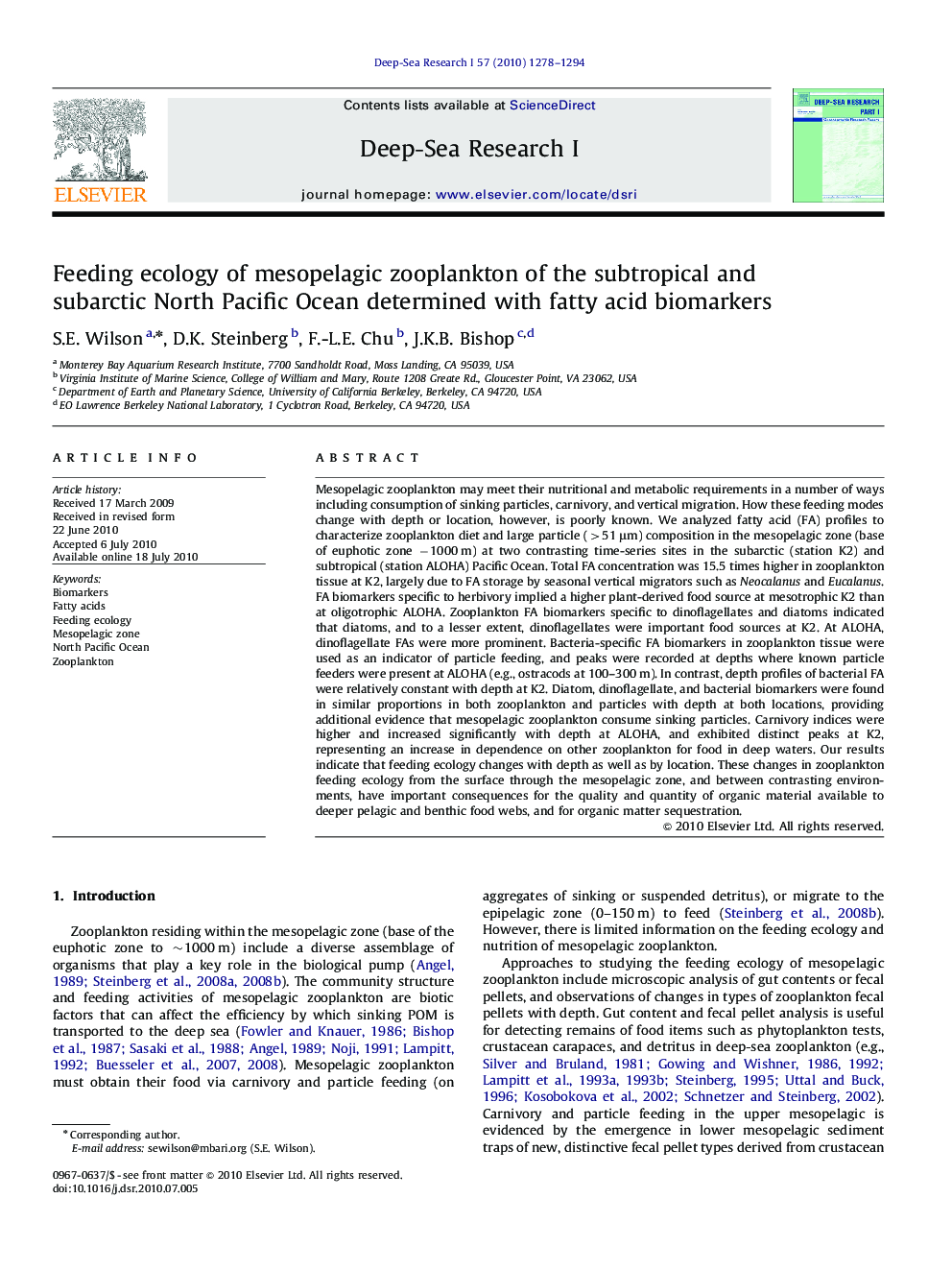| کد مقاله | کد نشریه | سال انتشار | مقاله انگلیسی | نسخه تمام متن |
|---|---|---|---|---|
| 4535284 | 1326095 | 2010 | 17 صفحه PDF | دانلود رایگان |

Mesopelagic zooplankton may meet their nutritional and metabolic requirements in a number of ways including consumption of sinking particles, carnivory, and vertical migration. How these feeding modes change with depth or location, however, is poorly known. We analyzed fatty acid (FA) profiles to characterize zooplankton diet and large particle (>51 μm) composition in the mesopelagic zone (base of euphotic zone −1000 m) at two contrasting time-series sites in the subarctic (station K2) and subtropical (station ALOHA) Pacific Ocean. Total FA concentration was 15.5 times higher in zooplankton tissue at K2, largely due to FA storage by seasonal vertical migrators such as Neocalanus and Eucalanus. FA biomarkers specific to herbivory implied a higher plant-derived food source at mesotrophic K2 than at oligotrophic ALOHA. Zooplankton FA biomarkers specific to dinoflagellates and diatoms indicated that diatoms, and to a lesser extent, dinoflagellates were important food sources at K2. At ALOHA, dinoflagellate FAs were more prominent. Bacteria-specific FA biomarkers in zooplankton tissue were used as an indicator of particle feeding, and peaks were recorded at depths where known particle feeders were present at ALOHA (e.g., ostracods at 100–300 m). In contrast, depth profiles of bacterial FA were relatively constant with depth at K2. Diatom, dinoflagellate, and bacterial biomarkers were found in similar proportions in both zooplankton and particles with depth at both locations, providing additional evidence that mesopelagic zooplankton consume sinking particles. Carnivory indices were higher and increased significantly with depth at ALOHA, and exhibited distinct peaks at K2, representing an increase in dependence on other zooplankton for food in deep waters. Our results indicate that feeding ecology changes with depth as well as by location. These changes in zooplankton feeding ecology from the surface through the mesopelagic zone, and between contrasting environments, have important consequences for the quality and quantity of organic material available to deeper pelagic and benthic food webs, and for organic matter sequestration.
Journal: Deep Sea Research Part I: Oceanographic Research Papers - Volume 57, Issue 10, October 2010, Pages 1278–1294